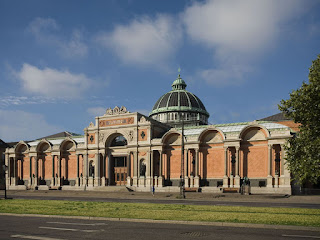Facts:
 |
| The facade |
- Built: 1882
- Style: Historicist: the facade is neo-renessance, while some other parts are neo-classical
- Website: www.glyptoteket.com
Everyone heard of the Carlsberg beer but not many know that the Jacobsen family, that established the Carlsberg brand, was also fond of arts. To be exact Carl Jacobsen, the son of the founder of the Carlsberg Breweries was a sculpture collector. Initially he kept his art collection in his house, where he had 19 galleries. This house-museum is the first Carlsberg Glyptotheque. When he realised that the house-museum was too small, Carl Jacobsen decided to donate his collection of sculptures to the State of Denmark and the City of Copenhagen, with the condition that the authorities had to provide a suitable property to the collection. This became the New Carlsberg Glypthotheque (new in Danish is ny). Today the museum is run jointly by the Danish state and the New Carlsberg Foundation.
 |
| Carl Jacobsen |
The collection
The museum has a really wide range collection of artefacts. From the very ancient Mesopotamian civilisation, through Egypt, Greece, the Roman Empire, to the French and Danish art from the 19th century. Besides these permanent exhibitions the museum offers temporary exhibitions year-round.The building
Architect Vilhelm Dahlerup was appointed by Carl Jacobsen to design the new museum building for the French and Danish collections. This part of the building was built in neo-renaissance style (to be exact venetian renaissance). This part of the museum was opened in 1897. However, Jacobsen soon realised that the building is not big enough. He wanted to provide suitable premises to the antique collection. This time Jacobsen decided to hire Hack Kampmann, who designed the extension in neo-classical style. Dahlerup also built a winter garden in between the two main buildings. The extended museum opened in 1907.

